In many ways the Canon EOS 6D is the Canon's first true enthusiast level full-frame digital camera. While the Canon EOS 5D Mark III and Canon EOS 1DX also have a full frame sensor, the Canon EOS 6D's design and handling is far closer to that of the APS-C format Canon EOS 60D.
[Update: The EOS 6D is now over six years hold and has since been replaced by the much better EOS 6D Mark II. This has seen a boost in performance and an overhauled AF system, making it a much more advanced and up-to-date DSLR. The EOS 6D is old, and unless you can find a brilliant deal on one, we'd recommend you look elsewhere. Here's our pick of the best full-frame cameras.]
In a mix of numbers, the Canon 6D sits just below the Canon EOS 7D and above the Canon EOS 60D, despite the Canon 7D being considerably cheaper. But then the Canon EOS 7D was launched back in 2009, and although it has high-end features that are well tuned to wildlife and sports photographers, its price has fallen.
The smaller body size and weight, as well as the reduced feature set, confirm that the Canon 6D is for the enthusiast or travel photographer. These users want a high-quality camera, but they don't need the bomb-proof build quality of cameras higher up the Canon DSLR lineup.
Canon has included a couple of modern niceties with the 6D, including Wi-Fi and GPS technology built in for the first time in a DSLR.
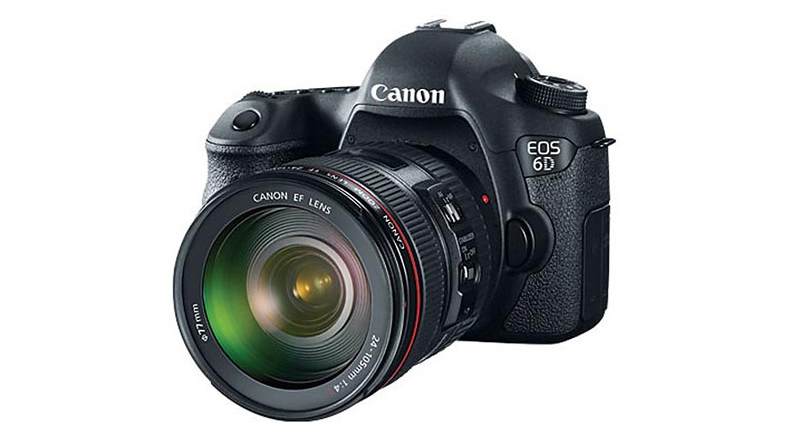
These are handy for recording your location and taking wireless control of your camera or uploading your images directly to your computer or Facebook and so on, without having to carry cables.
At the heart of the Canon 6D is a 20.2 million pixel full frame CMOS sensor. This combined with the Digic 5 processor enables a native sensitivity range of ISO 100-25600, which is great for low light and landscape work, but can be extended to ISO 50-102400 if necessary.
Priced at £1,799/AU$ 2,349/US$ 2,099 body only or £2,519.99/AU$ 3,498/US$ 2,899 with an EF 24-105mm f/4 L IS USM kit lens, the Canon EOS 6D is appreciably more affordable than the Nikon D600.
There are a total of 11 AF points, eight fewer than the Canon 7D, with only the central one being cross-type. This means the Canon 6D has two more AF points than the Canon 60D, but this lower-level camera’s nine points are all cross-type.
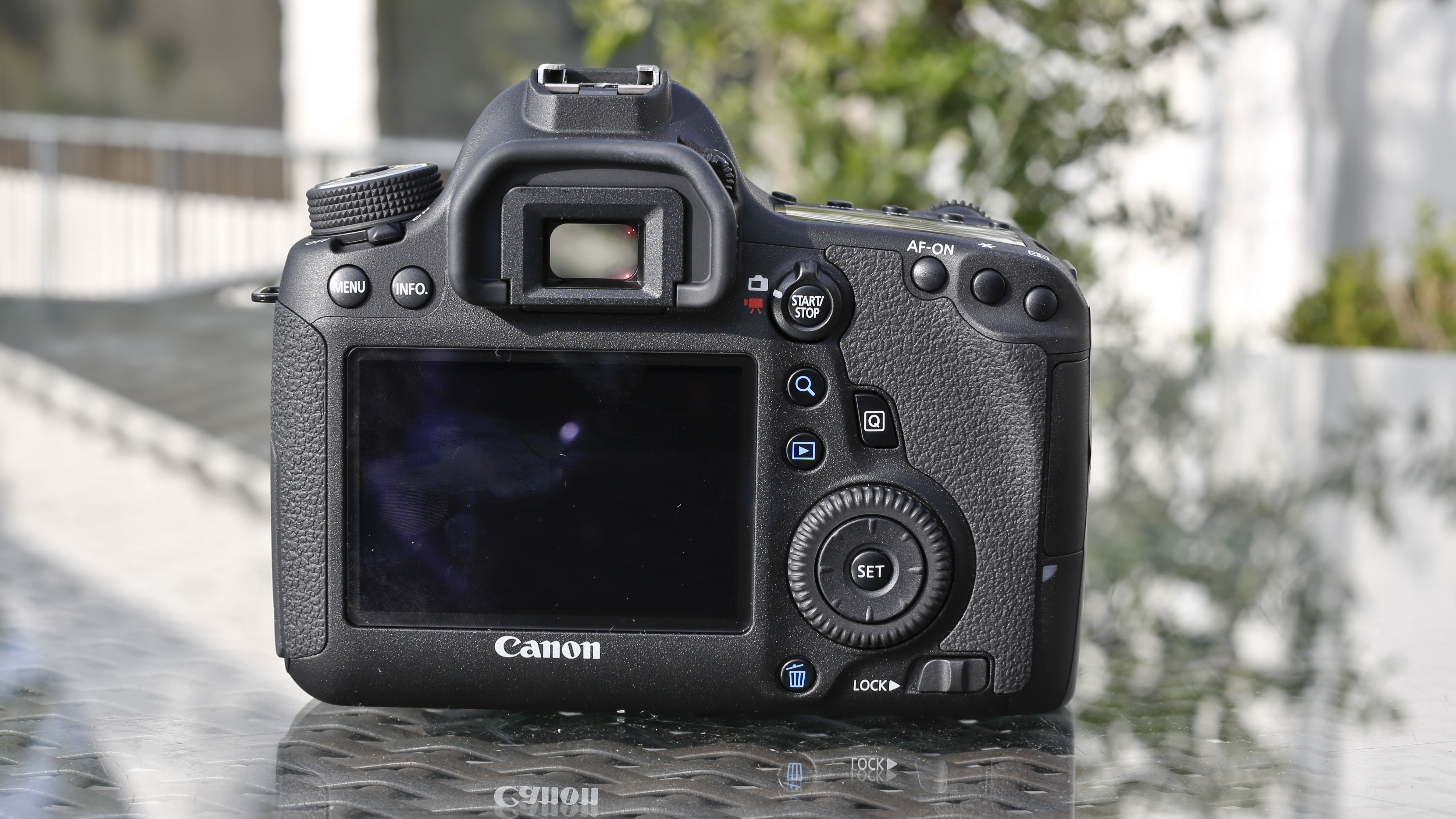
Migrating down from the Canon 5D Mark III are the various AF fine tune options, showing that the Canon EOS 6D is capable of some advanced AF control. These enable you to quickly adjust the tracking sensitivity and the acceleration and deceleration of tracking, which again are all useful when shooting moving subjects.
At 4.5fps, the Canon EOS 6D’s maximum continuous shooting rate is also slower than the 5.3fps of the Canon 60D, which even given the Canon 60D’s 2MP lower resolution seems a little odd, because it has a Digic 4 processor.
Another key difference between the Canon 6D and the Canon 60D, of course, is that the APS-C format camera has an articulating LCD screen. In other respects, however, the screens are the same, and both cameras have a 3-inch 1,040,000-dot device.
Wi-Fi technology is slowly appearing in compact cameras and CSCs, but the Canon 6D is the first DSLR to feature it built in.

While this may seem like a gimmick in many cases, or at worst just a half-hearted attempt, Canon’s engineers have produced a simple, straightforward solution that’s easy to set up and is beautifully executed.
Pairing the camera and a smartphone takes a couple of minutes via the Canon EOS Remote app, and shouldn’t be beyond the reach of even the most tech-phobic photographer. Once paired, you can select the shooting mode you want and then adjust the settings on the screen of your phone.
Taking manual mode as the example, you have quick and instant access to aperture, shutter speed and sensitivity, which are all adjustable with a touch of the relevant option.
As default, the focus button is hidden, but once it’s switched on through the settings menu, the app suddenly becomes the wireless solution we’ve been waiting for.
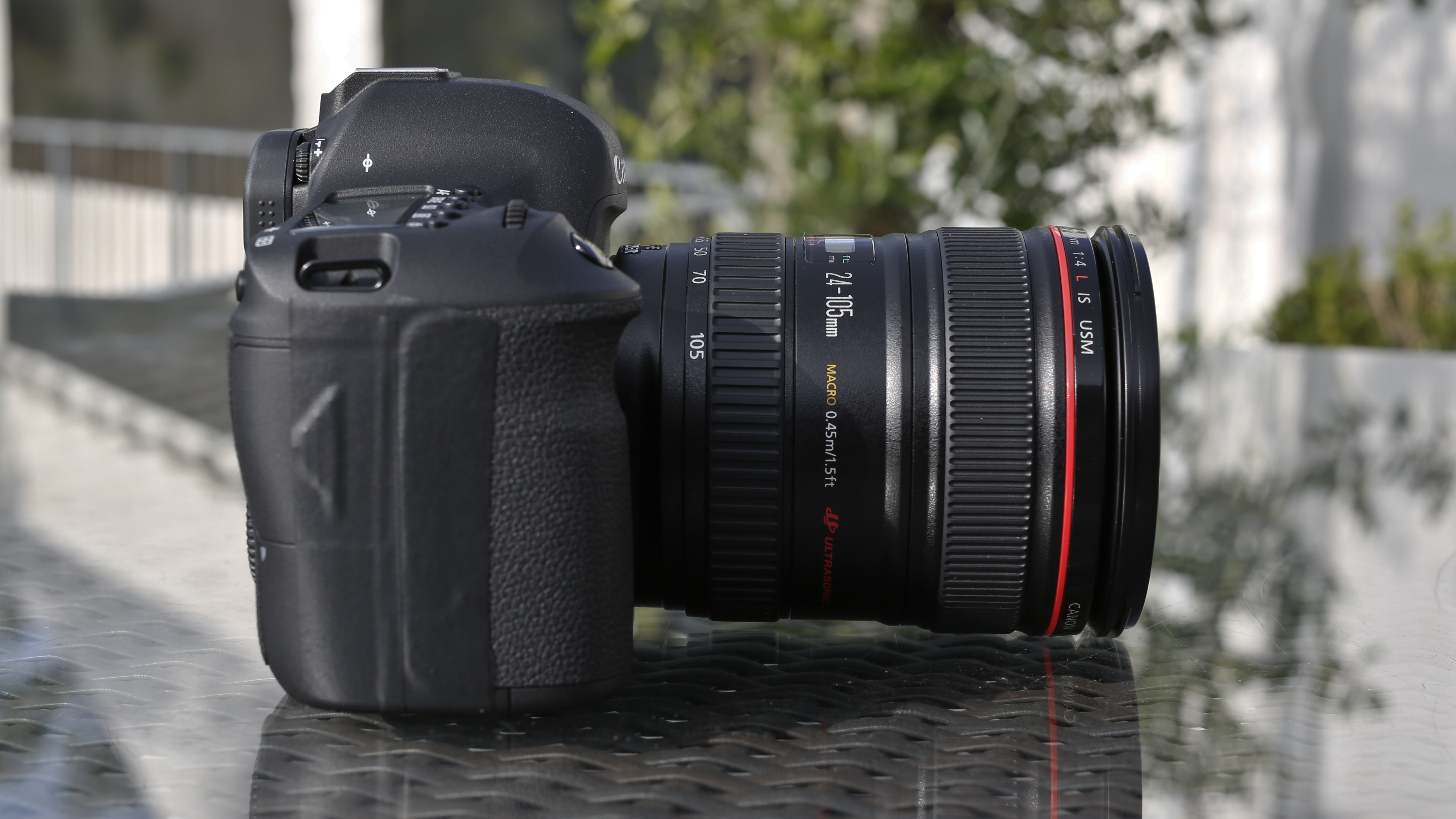
In use this Wi-Fi app works seamlessly, enabling you to quickly select your focus point, touch to focus, double-tap to zoom in on the image preview and check, and tap the shutter release to shoot. Once taken, the image appears on screen.
As with solutions from Nikon, Panasonic and Olympus, images can be downloaded from the card to the device ready to view.
At present the only company to take the Wi-Fi solution a step further is Panasonic, with the GH3 and the ability to zoom wirelessly with its power zoom lenses.
The Wi-Fi feature isn’t just isolated to camera control through a smartphone, though, since there are further options in-camera that can connect to other wireless networks. These options include uploading your images, transfering files between camera bodies or computers or to your printer and even a Wi-Fi-enabled TV.

The addition of GPS should appeal to travel photographers, but is one of those features that can only be fully appreciated once used. Being able to accurately locate where you’ve shot your pictures is handy, especially if there are locations you visited and mean to return to.
As with Wi-Fi, setup is quick – just switch it on in the menu system, adjust the settings as needed and it’s ready to go, once a satellite has been located, of course.
Then go about shooting as normal, and once back at your computer the GPS data is automatically tagged to the image information. This can be recalled and viewed either through Canon’s software or any application that can read EXIF information.
Both Wi-Fi and GPS, once switched on, are highlighted on the LCD screen.

There are several omissions from the Canon EOS 6D that we might reasonably expect to see on a camera of this level, but times are changing and so is the way we use a DSLR, so some of these absences start to make sense.
Unlike the Canon EOS 7D, there’s no PC socket (the port for connecting a studio flash) or pop-up flash. However, there is a flash hotshoe. This shouldn’t be an issue for many enthusiasts, however, because they tend to use flashguns.
If you do want to use the camera with a studio setup, then many budget sets including some from Ellinchrom, Lencarta and Bowens now feature their own trigger wireless systems.
Next is the single SD card slot. With rivals such as the Nikon D600 featuring two SD card slots and the Canon EOS 5D Mark III having SD and CF ports, you’d expect to see two card slots in this body.
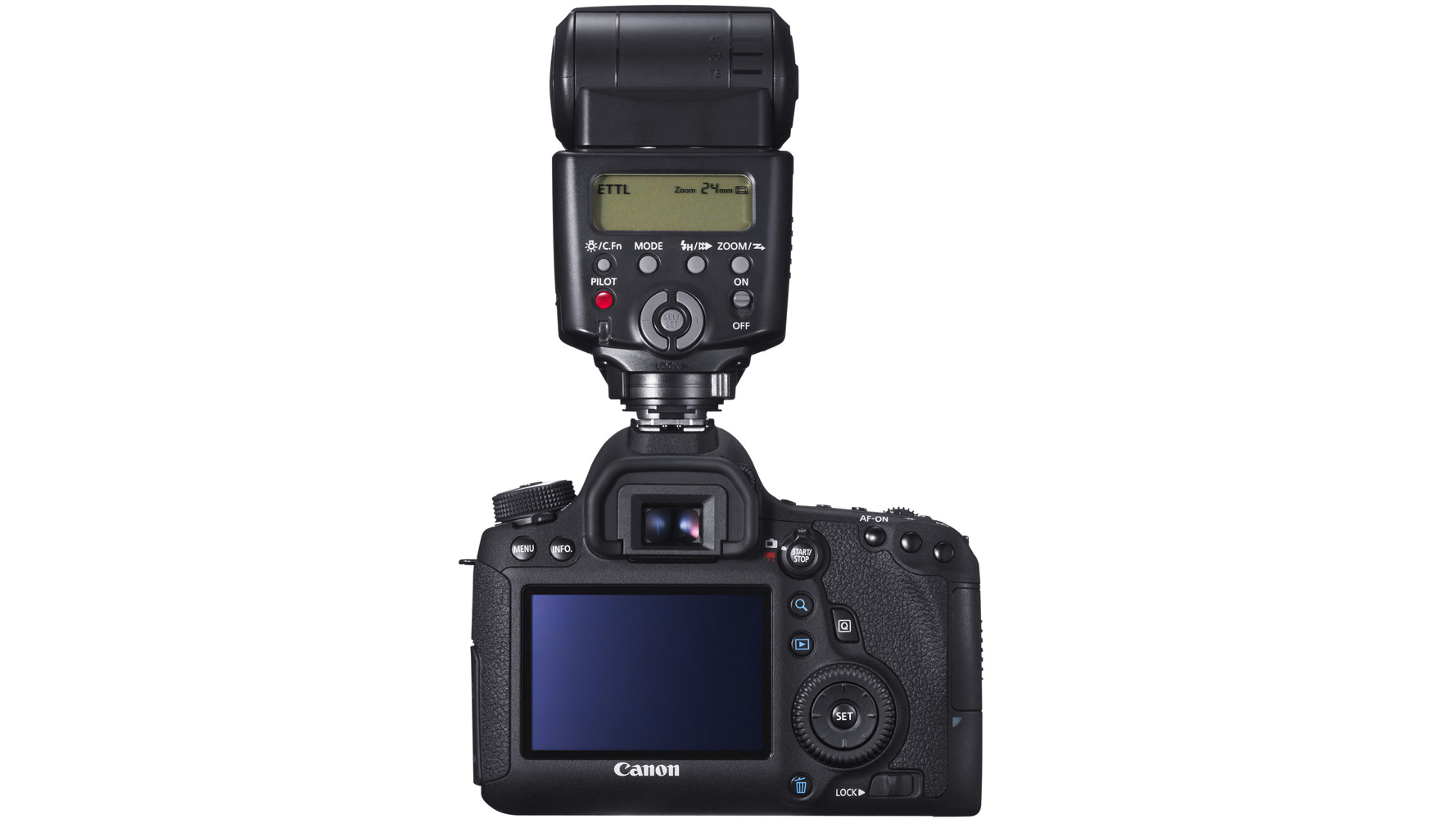
But keeping body size and weight to a minimum was important for the Canon EOS 6D’s designers. Add to this the low price and high capacity of SD cards today, and two slots becomes less essential to enthusiast photographers.
Full HD video capture is of course possible, but as with both the Canon EOS 7D and Canon EOS 60D there’s no headphone socket for you to monitor the sound while recording. There is a visual guide to audio levels, along with Manual control over them, however.
Hitting the info button in movie live view switches between the different overlay and info screens, one of which includes a visual audio level, which enables you to monitor the sound levels visually when recording.
So while the Canon EOS 6D has the ability to shoot high quality video footage, an external audio recorder such as the Tascam DR-40 is still worth considering.
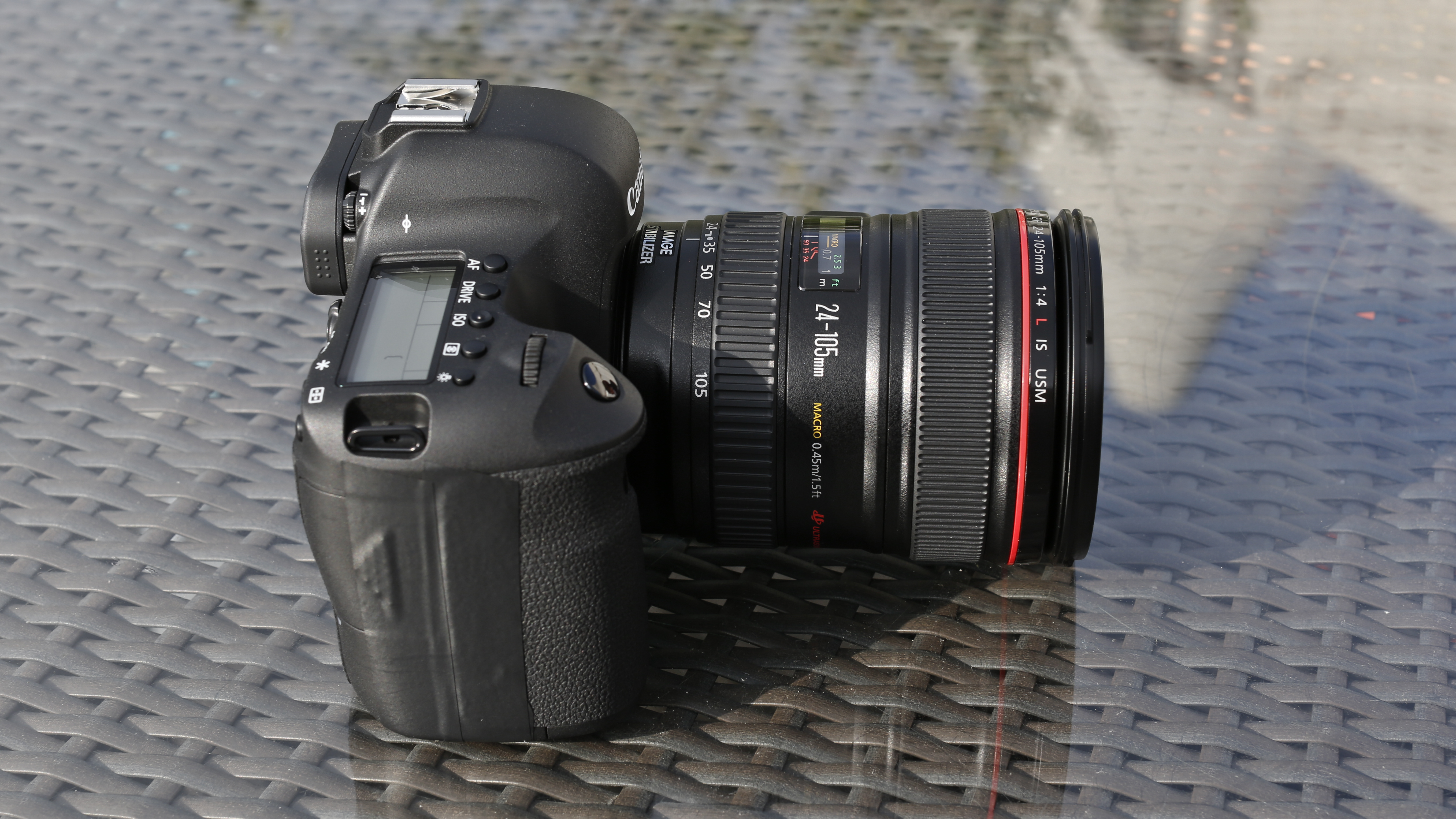
Touch and articulated screens have become big news. So while the EOS 60D has a very handy articulated screen and the EOS 650D has a touchscreen, the EOS 6D feels a little bit of a letdown, with a fixed high resolution Clear View TFT 3-inch screen with approximately 1040k dots.
Although the screen has no new frills, it displays menus and images clearly. In bright sunlight the amount of reflection is kept to a minimum, and most importantly the colour and tone of images on the screen closely relates to those you see on screen back in the digital darkroom.
Looking at the size and control layout of the Canon EOS 6D quickly confirms that it is a mix of both the Canon EOS 7D and Canon EOS 60D, with the size, weight and control layout being similar to the Canon 60D but with the Canon 7D’s movie and stills live view switch on its back.
Although the Canon 6D’s weight is the same as the Canon 60D’s, it has half a centimetre more on the height and slightly less depth, which means that the grip is a bit deeper. This makes a surprising amount of difference, and means the grip gives better purchase.
A thoughtful button layout means there’s instant access to many of the camera’s main features, such as AF method, sensitivity and exposure compensation. And settings changes can be made quickly.

As usual now, many of the key features can be accessed speedily via the quick menu, which is activated with a press of the dedicated button near the thumb rest.
The navigation control on the back of the camera features the same functionality as the EOS 60D, with a rotating outer ring to adjust settings such as aperture or shutter speed, a central directional pad for navigating menus and inner Set button for confirming settings changes.
Its position is ideal both for reviewing images and making settings changes, and when shooting with the camera to the eye, it is within easy reach of your thumb.
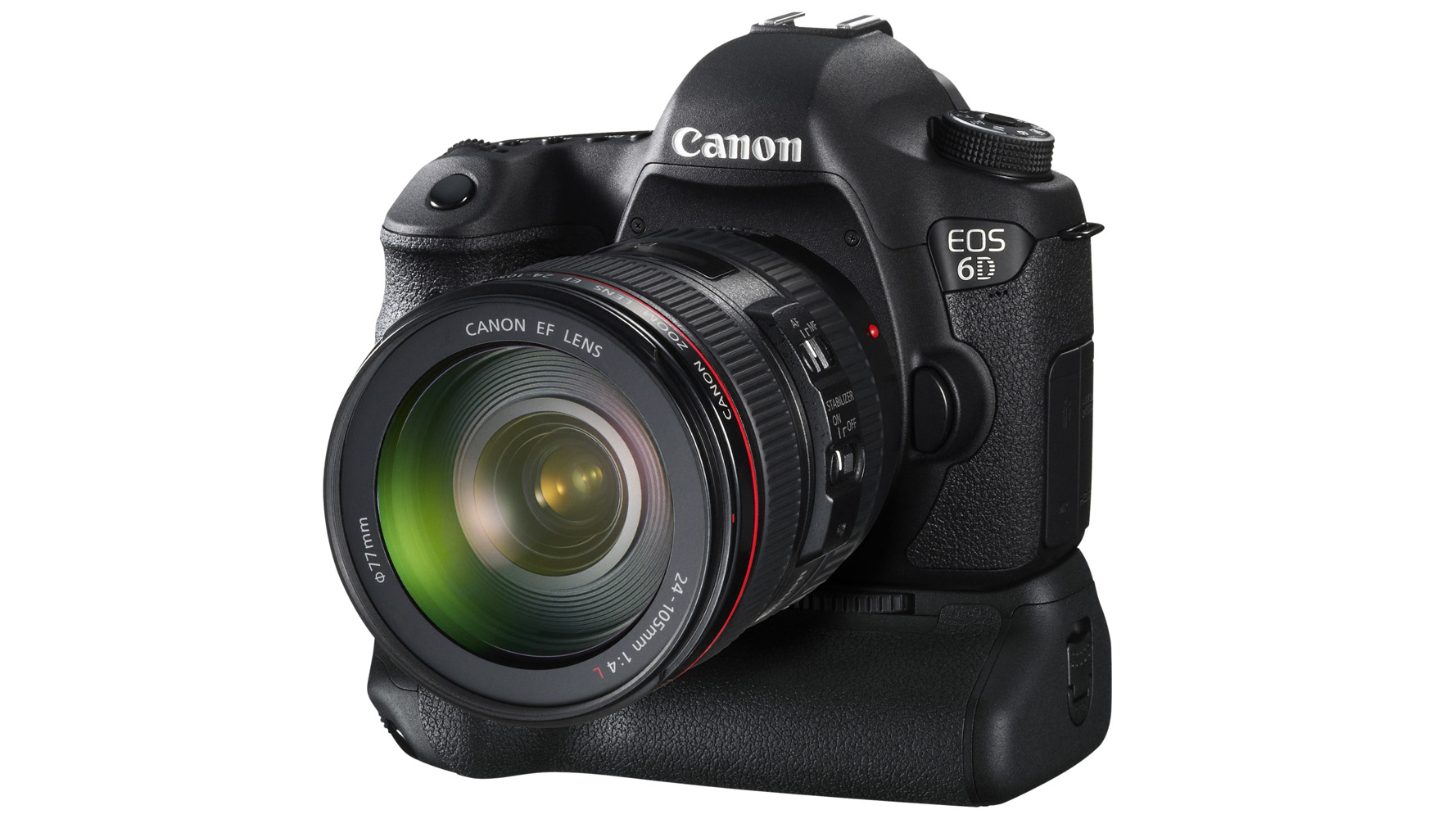
Images may be magnified by pressing the button to the left of the quick menu button, and then rotating the front control dial to zoom in and out, instead of using the two zoom buttons that featured at the top-right of the of the Canon EOS 60D and Canon EOS 7D.
Switch to video live view and the magnify button enables you to zoom in and check focus, which is very useful for manual focus, especially with macro subjects.
The top plate takes the standard EOS approach, featuring direct access buttons to the AF and drive modes, sensitivity (ISO), metering and LCD light settings.

The ISO button that sits in the middle of the group has been moulded with a recessed textured top, making it easier to identify with your finger when you’re holding the camera to your eye.
The ISO value is shown in the viewfinder itself, so you can make an informed adjustment, but rather unhelpfully the metering, drive mode and AF options don’t display in the viewfinder even when their corresponding button is pressed. This means they can’t be adjusted accurately when the camera is held to the eye.
The AF point selection control is in the usual position at the top right above the thumb rest, and the point control itself can be selected using the navigation pad. Alternatively the front control dial can be used to move the point from left to right.
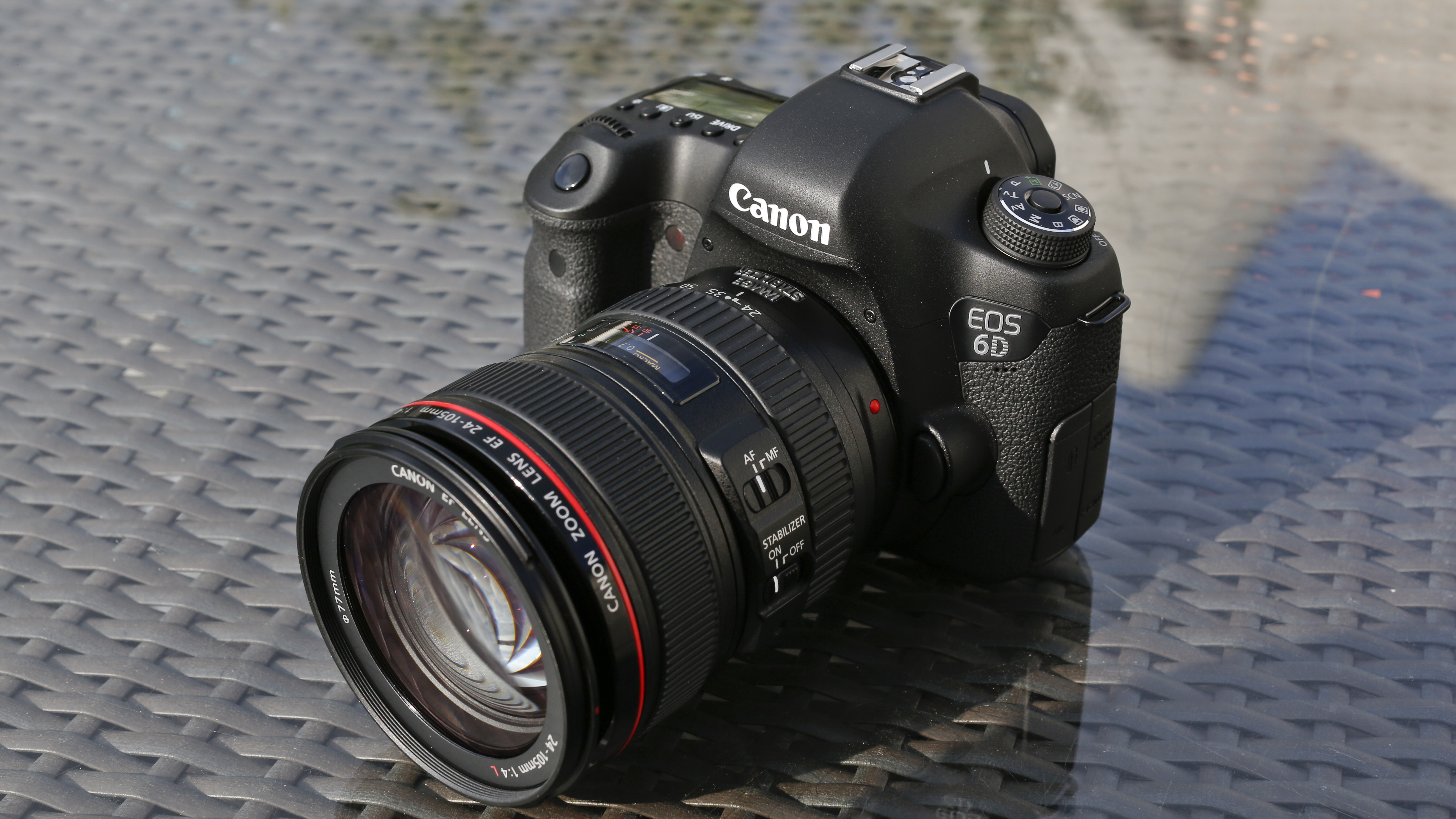
Canon’s menus have been expanding, and the Canon EOS 6D features an overwhelming assortment of options. Initially the 15 different screens seems a bit much, but this is due to Canon deciding against scrolling screens and rather giving a full list of options under each menu tab. This makes locating the feature you want far easier.
As with other Canon EOS models, the final tab is a My Menu screen. This is where you can place all of the most common features – we used it to access custom white balance, image quality, mirror lock up and ratings.
With 11 AF points grouped around the centre of the frame, there is a fair amount of choice, but only the centre one is cross type. We found that although the Canon 6D can focus quickly when the peripheral points are used, it doesn’t track moving subjects quite so well as when the centre point is used.
When photographing deer, we had a near 100% success rate when using the camera’s centre point, but many of the images benefit from cropping to improve composition.
As with both the Canon EOS 60D and Canon EOS 7D, the Canon EOS 6D uses the iFCL metering system with a 63-zone dual-layer metering sensor. As we’ve seen on previous Canon EOS bodies, this system is extremely accurate, taking into account the focus point, colour within the scene and the amount of available light.
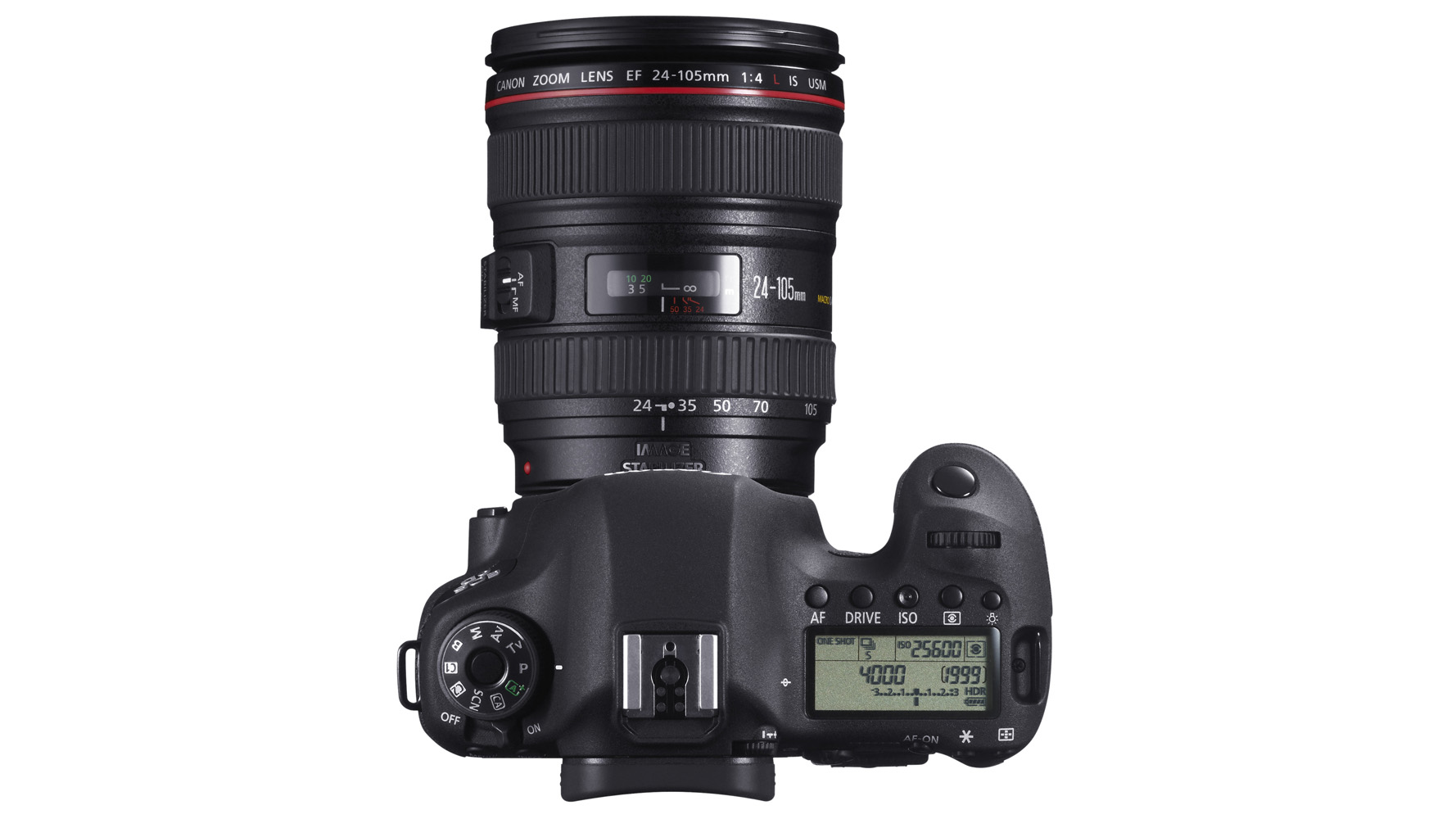
In practice this works well, but in high contrast situations a little exposure compensation maybe required. This can be either way, depending on the brightness of the subject under the active AF point.
Shooting wildlife against a flat sky in relatively low light really put the metering to the test, and while a small amount of positive exposure compensation was dialled in to lift the detail, the iFCL metering again proved that it was able to read the scene and subject well to capture the shot needed.
The 6D’s colour rendition is excellent, adding slight but not overwhelming warmth to images, so JPEGs are pleasing to the eye direct from the camera. The TFT screen’s representation of the final image is spot on, enabling you to accurately gauge whether or not you have the image that you want.

During part of this test we shot landscapes from dawn till dusk, through the different levels of light, and the metering and auto white balance systems performed well. There were no situations arising that needed more than a small adjustment to the exposure compensation.
White balance throughout was accurate, and even in the low light of the setting sun the camera was capable of reproducing the colours with a good amount of vibrance and clarity.
As it has a full frame sensor, you’d expect the Canon 6D’s low light performance to be good, and it certainly delivers. To make sure that the wildlife shots were sharp and the subjects were lifted from the background, a high sensitivity of ISO 800 was used with an open aperture of f/2.8.
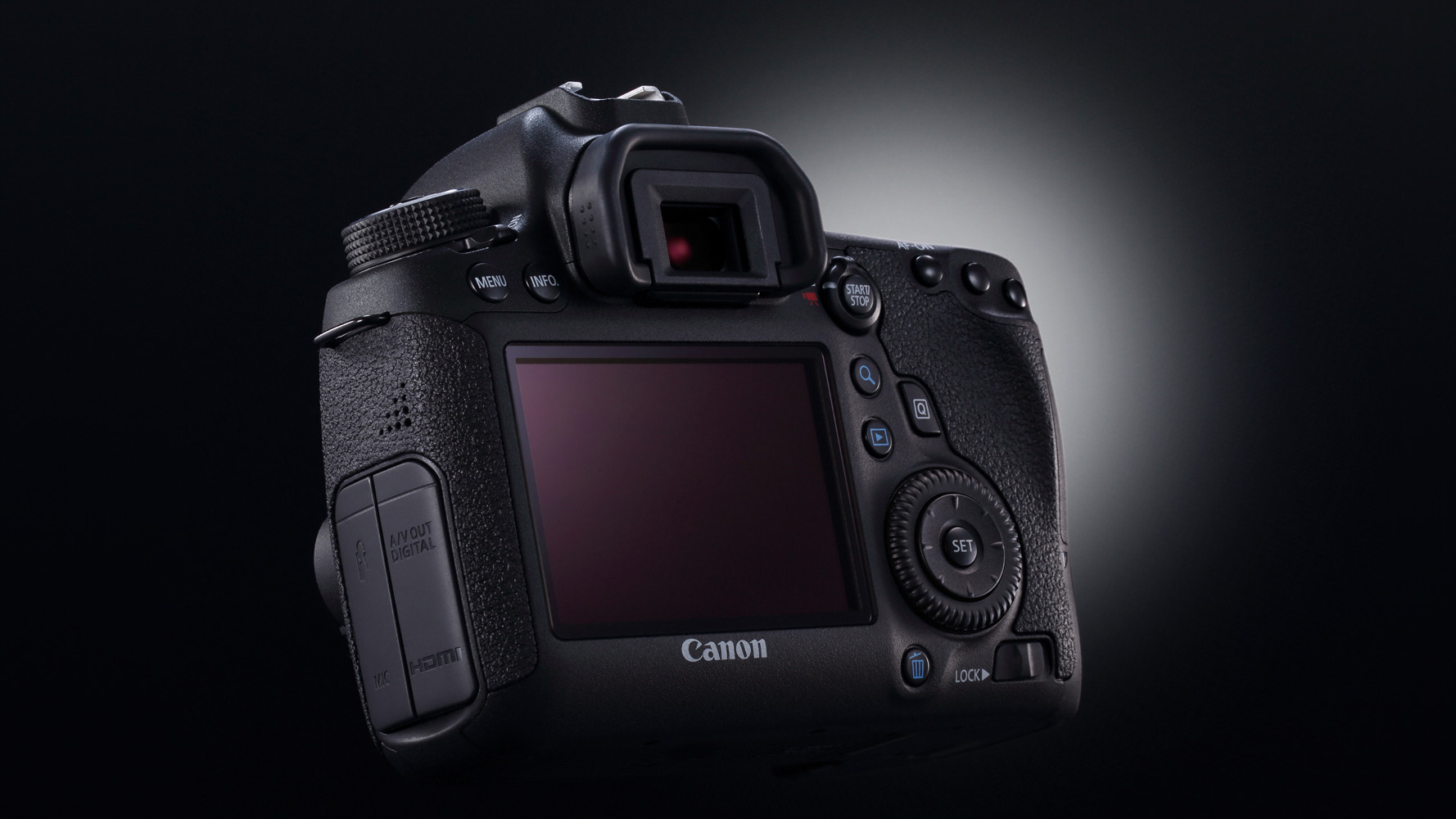
Zooming into 100% reveals good sharpness and little noise, but there is a slight reduction in the level of finer detail.
There are no visible signs of noise at the lower end of the sensitivity range. By ISO 800 there is a small amount of luminescent noise, but it is only at ISO 25600 that chrominance noise be seen, and then only slightly.
However, the detail smoothing to combat noise in JPEG files is apparent. And while noise is subdued the detail is also lost, although it does still capture usable images.

There is quite a difference between the appearance of JPEG and raw files, and Canon has done an excellent job with the JPEG processing, since these images are instantly pleasing, direct from camera.
Looking at the lab data, we can see that despite relatively average dynamic range scores for the JPEG files, the images themselves have good contrast and punchy colours.
The raw files, by contrast, contain a good two stops of extra shadow and highlight detail that can be recovered in post-processing. The amount of noise that appears in the raw files is generally higher, but again the full frame sensor comes into its own, and along with the Digic 5 processor it helps to keep noise subdued.
As part of our image quality testing for the Canon EOS 6D review, we’ve shot our resolution chart. These images were captured using a full-production sample of the camera.
If you view our crops of the resolution chart’s central section at 100% (or Actual Pixels) you will see that, for example, at ISO 100 the Canon EOS 6D is capable of resolving up to around 26 (line widths per picture height x100) in its highest quality JPEG files.
For a full explanation of what our resolution charts mean, and how to read them, check out our full explanation of our camera testing resolution charts.
Examining images of the chart taken at each sensitivity setting reveals the following resolution scores in line widths per picture height x100:
JPEG


ISO 100, score: 26 (Click here to see the full resolution image)

ISO 200, score: 26 (Click here to see the full resolution image)
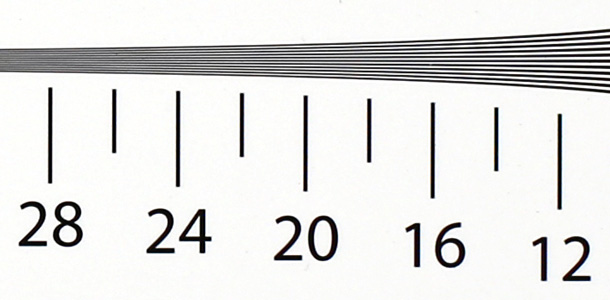
ISO 400, score: 26 (Click here to see the full resolution image)
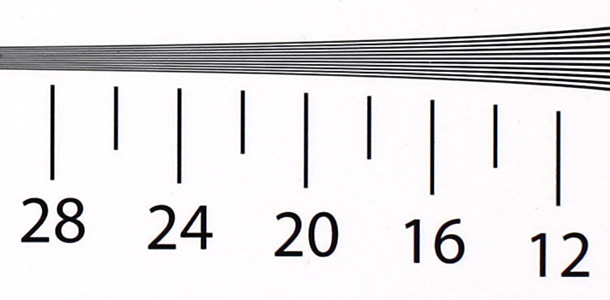
ISO 800, score: 26 (Click here to see the full resolution image)
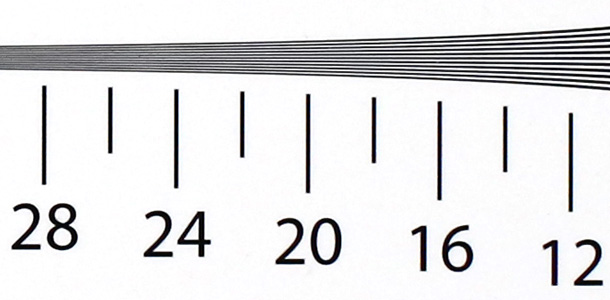
ISO 1600, score: 26 (Click here to see the full resolution image)
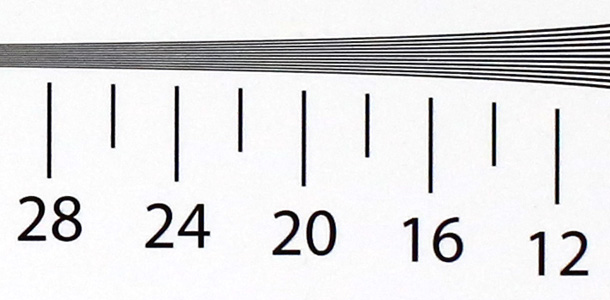
ISO 3200, score: 24 (Click here to see the full resolution image)
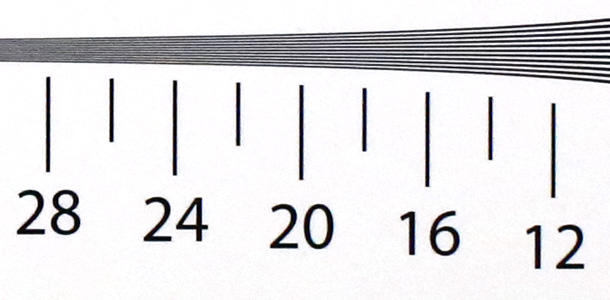
ISO 6400, score: 24 (Click here to see the full resolution image)

ISO 12800, score: 24 (Click here to see the full resolution image)
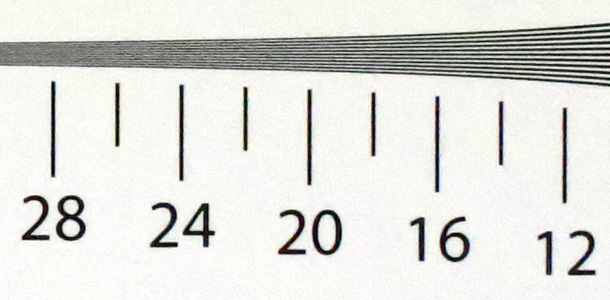
ISO 25600, score: 22 (Click here to see the full resolution image)
Raw
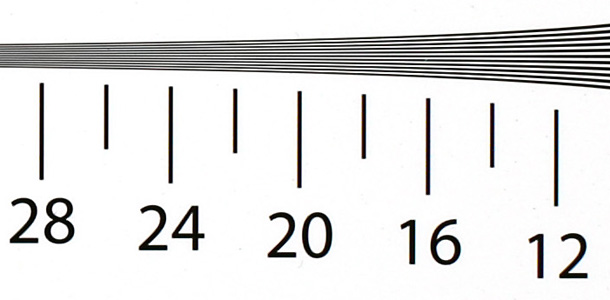
ISO 100, score: 28 (Click here to see the full resolution image)
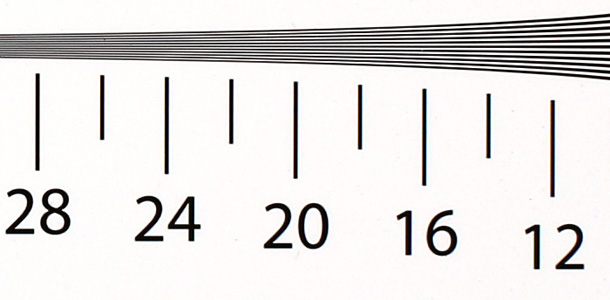
ISO 200, score: 26 (Click here to see the full resolution image)

ISO 400, score: 26 (Click here to see the full resolution image)
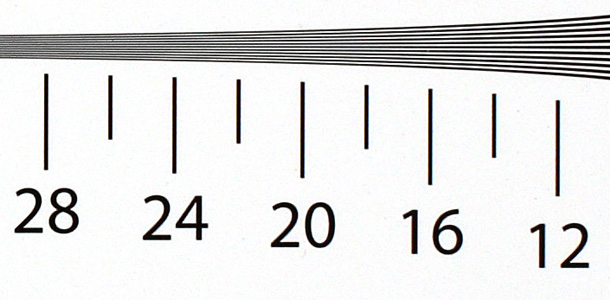
ISO 800, score: 26 (Click here to see the full resolution image)

ISO 1600, score: 26 (Click here to see the full resolution image)
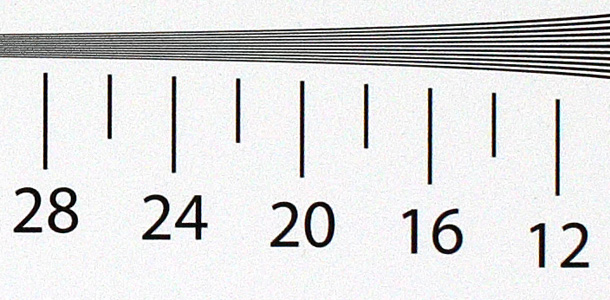
ISO 3200, score: 26 (Click here to see the full resolution image)

ISO 6400, score: 24 (Click here to see the full resolution image)
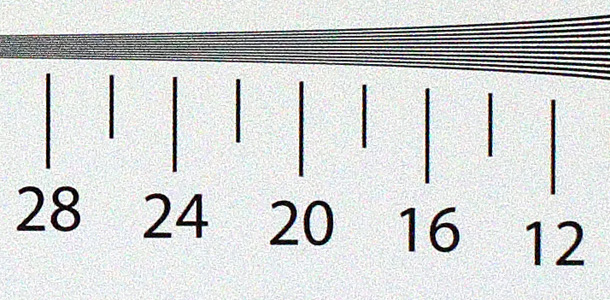
ISO 12800, score: 24 (Click here to see the full resolution image)

ISO 25600, score: 24 (Click here to see the full resolution image)
We shoot a specially designed chart in carefully controlled conditions and the resulting images are analysed using DXO Analyzer software to generate the data to produce the graphs below.
A high signal to noise ratio (SNR) indicates a cleaner and better quality image.
For more more details on how to interpret our test data, check out our full explanation of our noise and dynamic range tests.
Here we compare the Canon EOS 6D with the Nikon D600, Canon EOS 7D, Sony Alpha a77 and Canon EOS 5D Mk III. These images were captured using a full-production sample of the Canon 6D.
JPEG signal to noise ratio
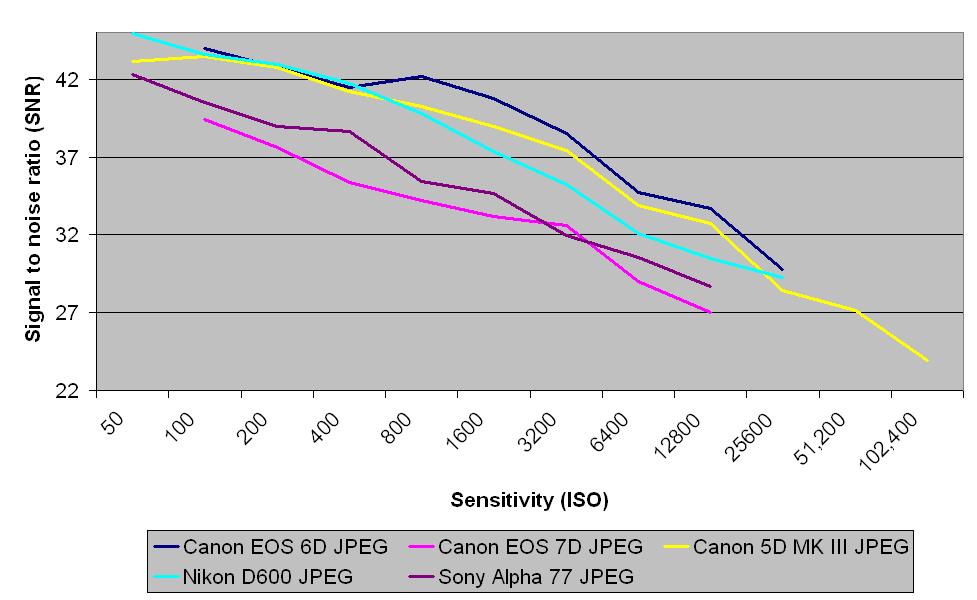
These results show that the Canon EOS 6D’s JPEG files have a similar signal to noise ratio to those from the Nikon D600 and Canon EOS 5D Mk III throughout the sensitivity range, beating those from the Canon EOS 7D and Sony Alpha a77 at every ISO setting.
Raw signal to noise ratio

The signal to noise ratios of the TIFF images (after conversion from raw) from the Canon EOS 6D are again very similar to those from the Canon EOS 5D Mk III and Nikon D600, although the Nikon’s performance trails off at higher sensitivities. The 6D beats the Canon EOS 7D and Sony Alpha a77 at every ISO.
JPEG dynamic range
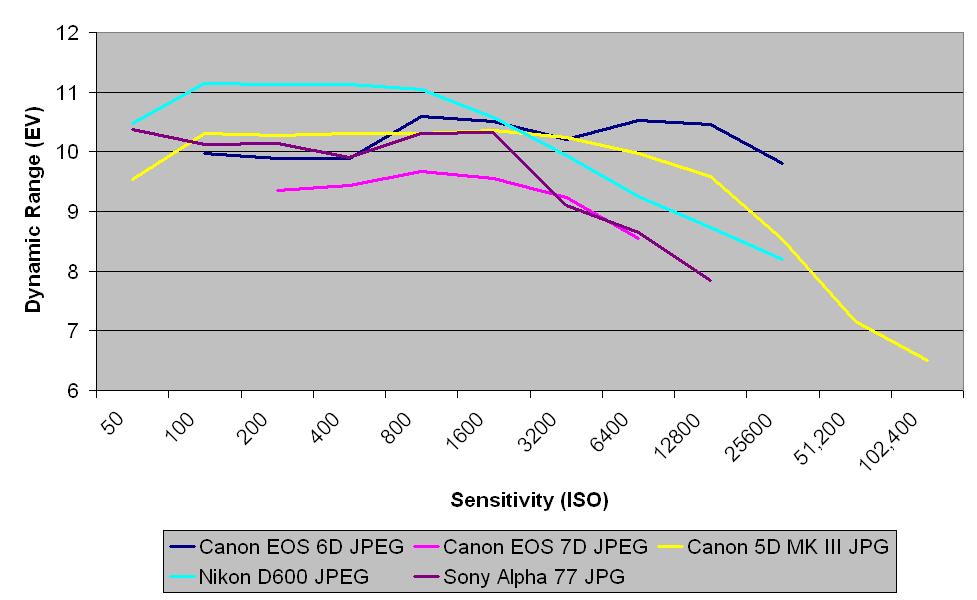
JPEG results for dynamic range are more confused than those for signal to noise ratio, with the Canon EOS 6D performing comparatively poorly at low ISOs, lagging behind the Nikon D600, Sony Alpha a77 and Canon EOS 5D Mk III but still beating the Canon EOS 7D. In the mid-range it picks up while some of the other cameras drop off, making it the second-best performer for a while, until it ends up on top by the upper end of the sensitivity range.
Raw dynamic range
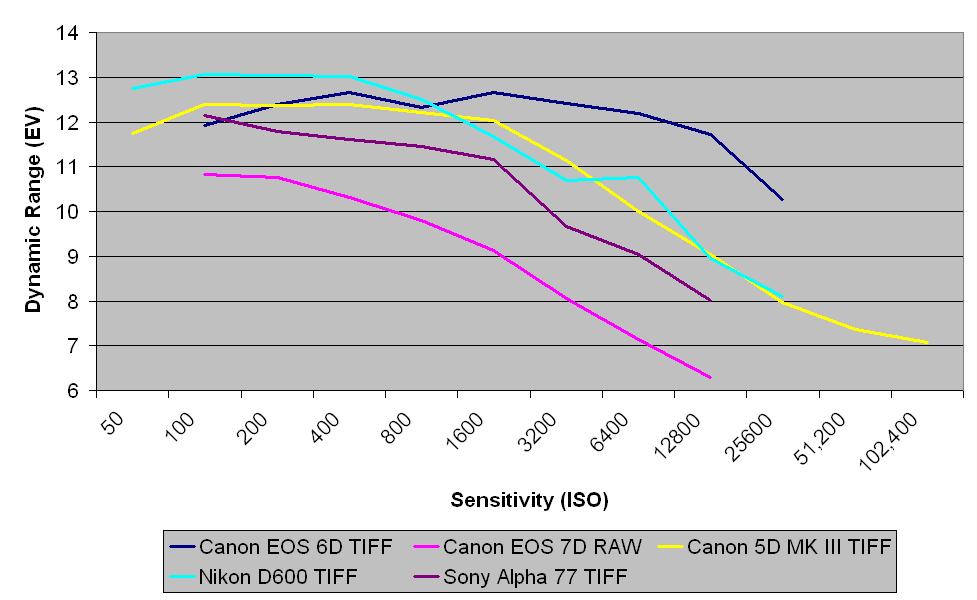
This chart indicates that TIFF images (after conversion from raw) from the Canon EOS 6D have a similar level of dynamic range as the JPEG images. The 6D starts out producing less dynamic range than the Nikon D600 and Canon EOS 5D Mk III, but a greater range than the Canon EOS 7D and Sony Alpha a77. But by ISO 400 it is the second best performer behind the Nikon, and at higher ISOs it takes the lead by a significant margin.
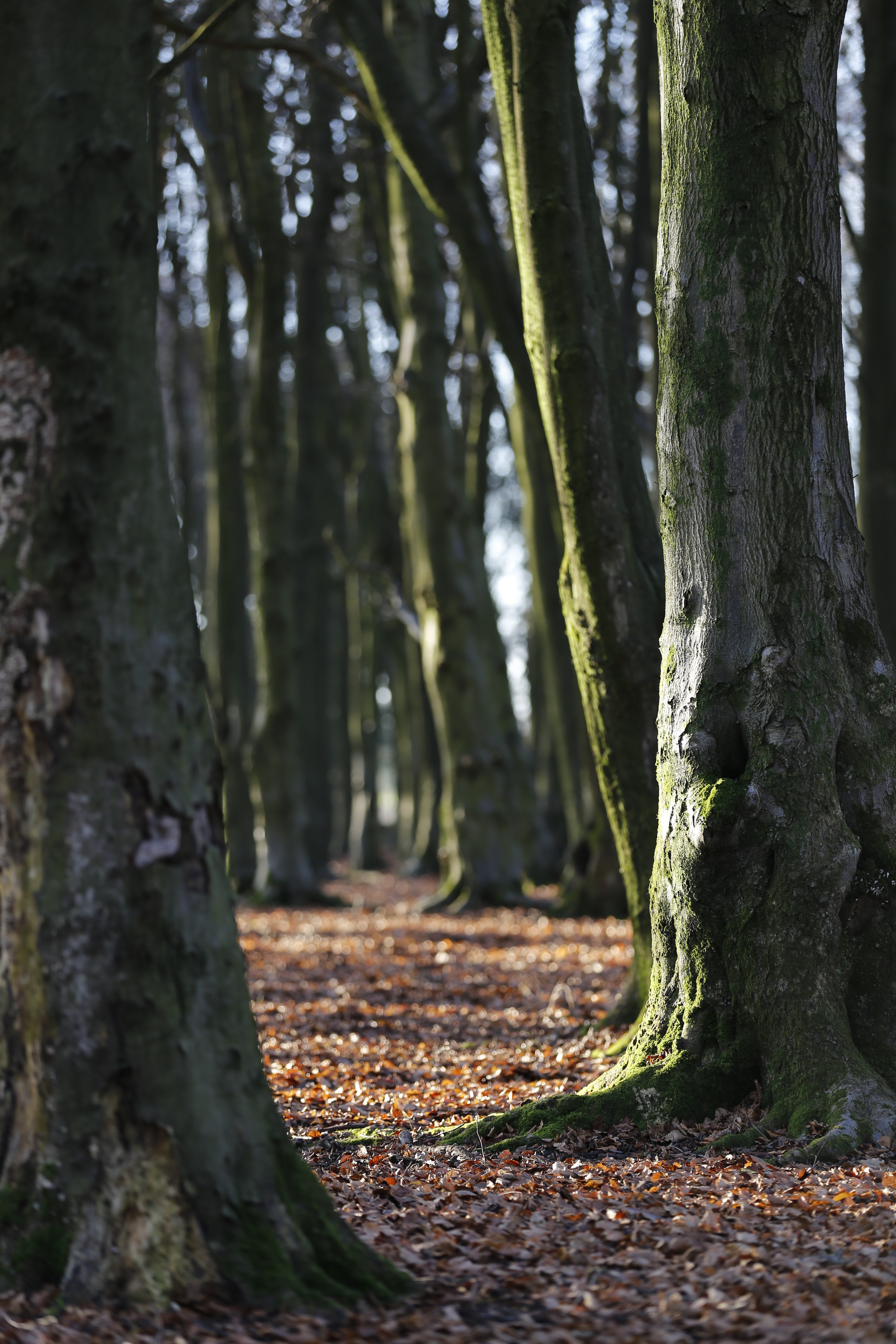
Click here to see the full resolution image
The Canon EOS 6D’s iFCL metering is able to handle tricky lighting situations well. In this shot the high contrast and differences in exposures have been well balanced, enabling the capture of an image that retains detail well in both the shadows and highlights.

Click here to see the full resolution image
Shot at ISO 800, this image retains both vibrant colour and detail. Zooming in to the blurred background shows minimal noise.
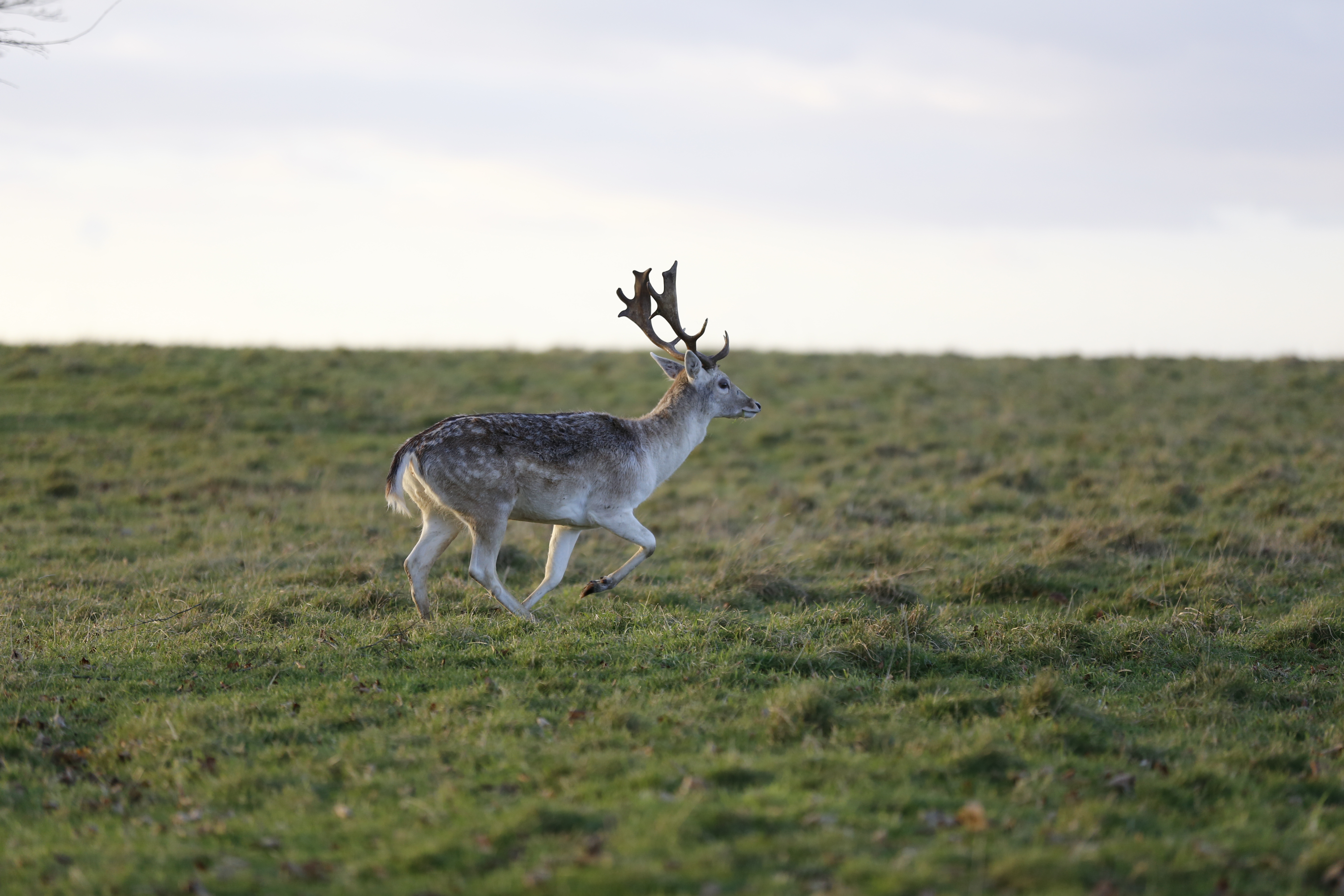
Click here to see the full resolution image
Taken with the Canon EF 70-200mm L series lens, the centre cross type AF point locks on focus quickly, ensuring you get the shot you want. Zooming into the image at 100% shows that, while the image is sharp, the built-in JPEG processing has softened the detail.
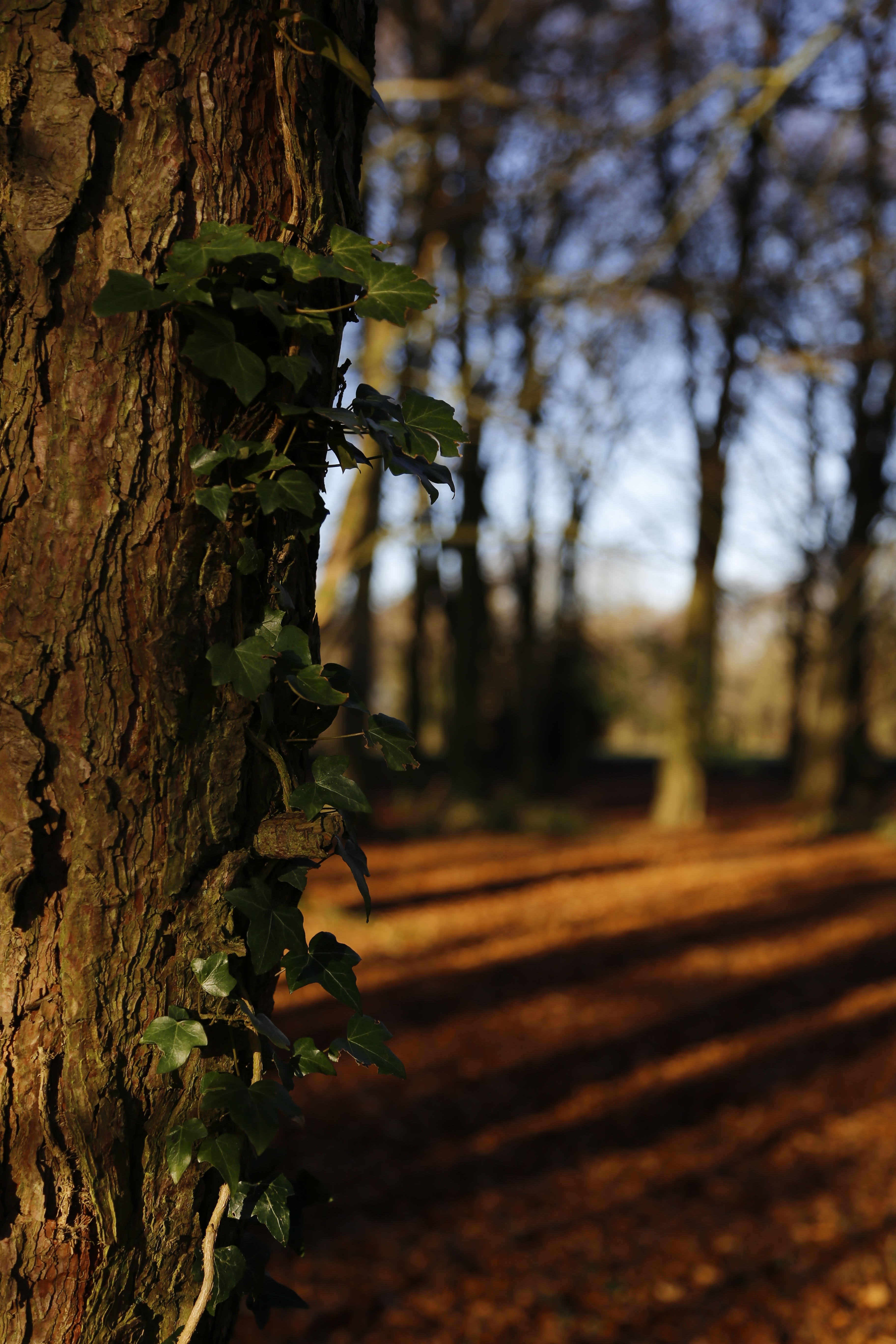
Click here to see the full resolution image
Colours captured are bright and vibrant, and this late afternoon shot shows that the camera’s tendency to add warmth really helps to bring this image to life.

Click here to see the full resolution image
In low light there is a large difference in the exposures needed to capture this landscape. However, the full-frame sensor is capable of capturing a wide dynamic range that avoids burnt out highlights in the sky and lost detail in the shadows.

Click here to see the full resolution image
The 20.2 million pixel sensor is able to resolve plenty of fine detail, picking out the texture and colour of the goat’s coat well.

Click here to see the full resolution image
Evaluative metering and a low sensitivity of ISO 100 have helped to capture this landscape perfectly, with no visible noise and plenty of rich detail and colour.

Click here to see the full resolution image
Using evaluative metering for this scene proved tricky, due to the direct light from the sun. But dialling in +1.33 of exposure compensation enabled the camera to capture the warmth of the rising sun well.

Click here to see the full resolution image
Despite shooting into the sun and plenty of lens flare, the Canon EOS 6D’s full frame sensor and metering system still manage to capture the shot, with the AF quickly finding focus.

Full ISO 100 image, see the cropped (100%) versions below.

ISO 100
Click here to see the full resolution image
In-camera processing of JPEG files helps to boost colour and keep noise to a minimum. In this first shot at ISO 100, plenty of colour and detail have been captured. The image shows the five hills clearly defined, and the mist and trees can be easily picked out.
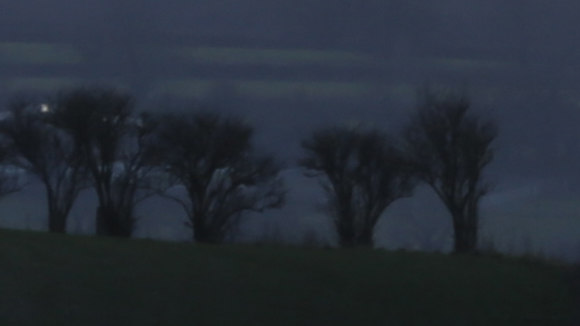
ISO 200
Click here to see the full resolution image
The same scene at ISO 200, and again the hills, trees and fields are clearly defined.
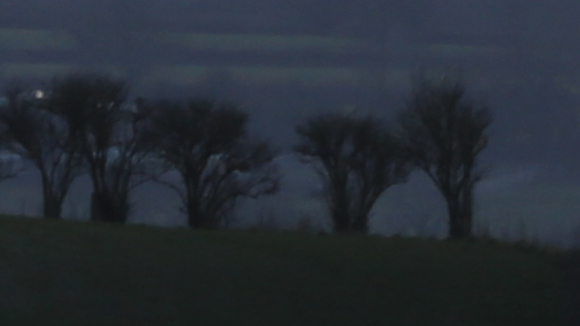
ISO 400
Click here to see the full resolution image
At ISO 400, the full frame sensor shows little sign of reducing the amount of shadow and highlight detail that is captured.
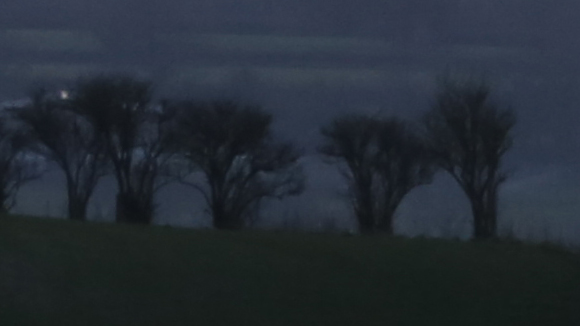
ISO 800
Click here to see the full resolution image
While the shadow and highlight detail of the image is retained, there is a slight softening of detail as the in-camera JPEG processing starts to suppress noise.
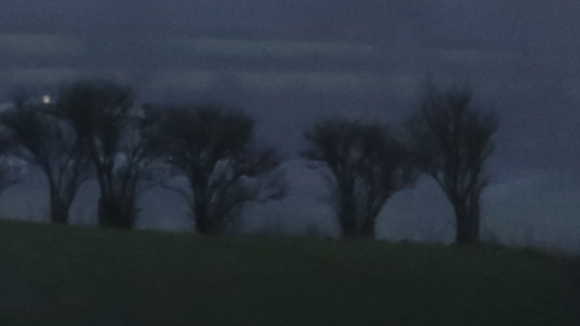
ISO 1600
Click here to see the full resolution image
Looking at the flatter tonal areas of the back two hills and sky, you can start to see a further loss of detail, but colour and tone is still impressive.
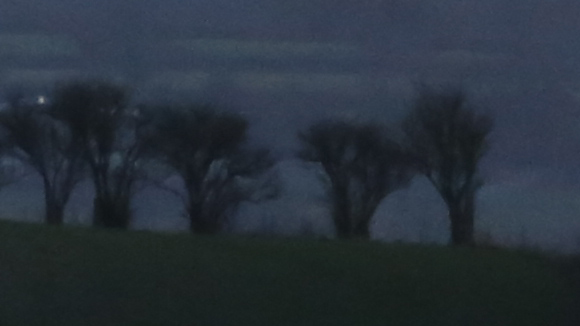
ISO 3200
Click here to see the full resolution image
At ISO 3200, colours start to wash out a little, and the noise suppression of JPEG files starts to lose some more of the finer detail.
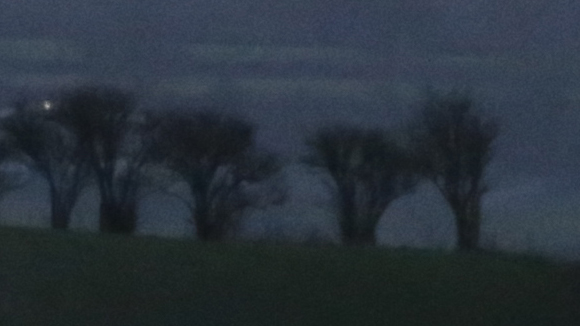
ISO 6400
Click here to see the full resolution image
Noise suppression in the background really starts to affect the flatter tonal areas.
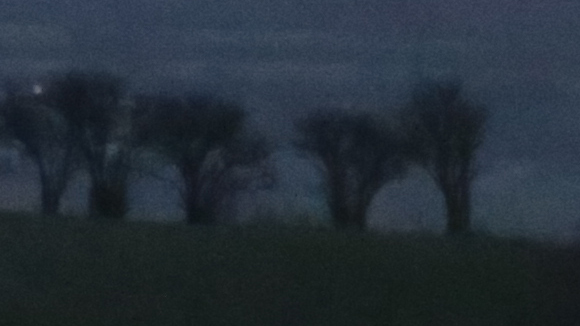
ISO 12800
Click here to see the full resolution image
While the noise suppression does minimise the effect of noise, the influence can just be seen on close inspection.
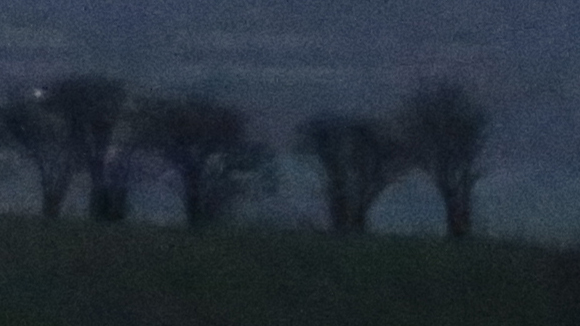
ISO 25600
Click here to see the full resolution image
At ISO 25600, despite the smoothing effect of the JPEG noise reduction, the image is still usable with good levels of colour and tone. But the minor detail and contrast of the image is subdued.
JPEG
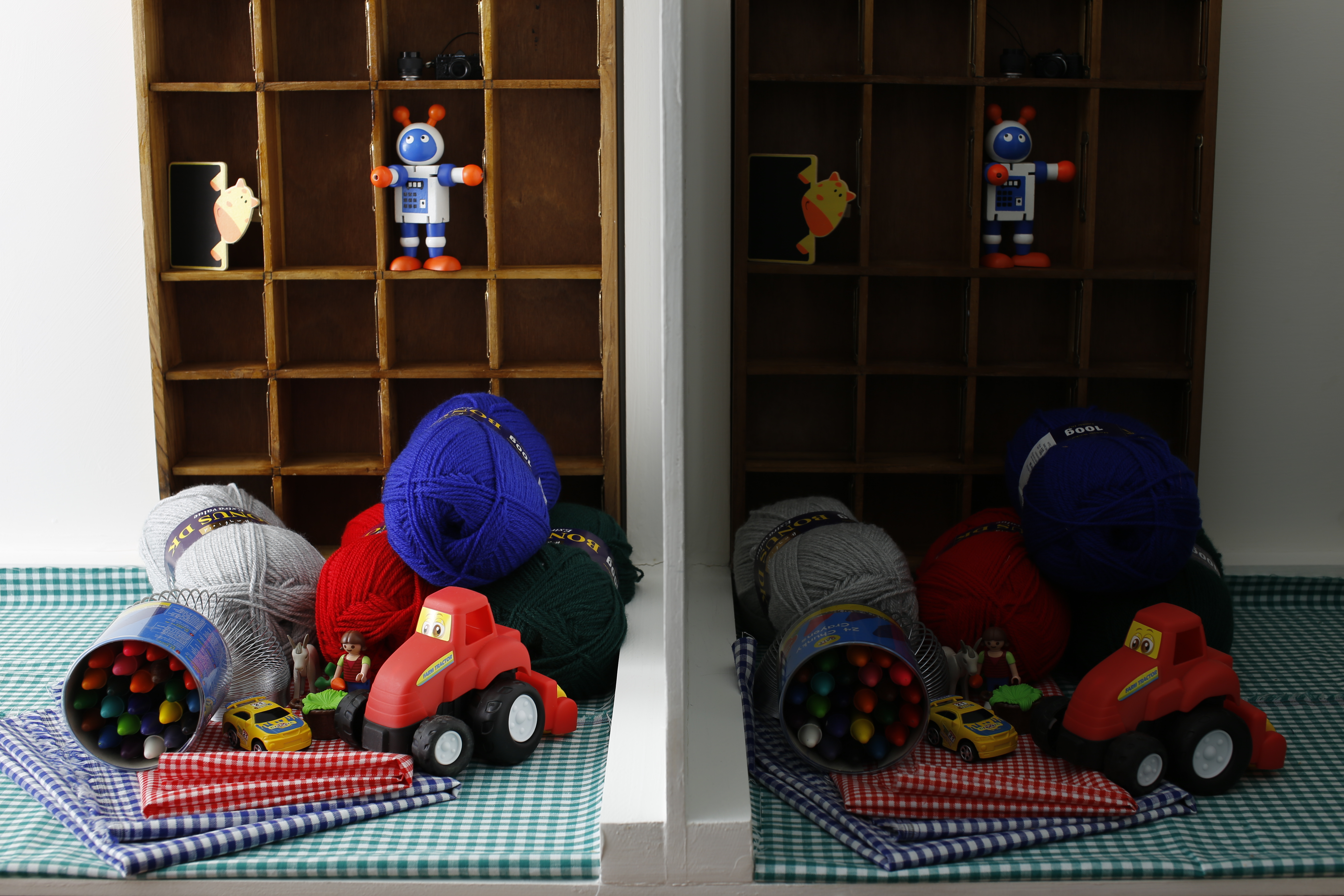
Full ISO 100 image, see the cropped (100%) versions below.
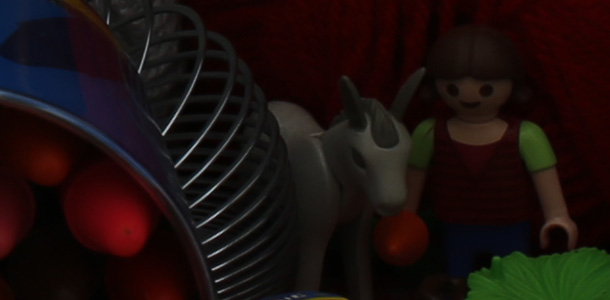
Click here to see the full resolution image
ISO 100
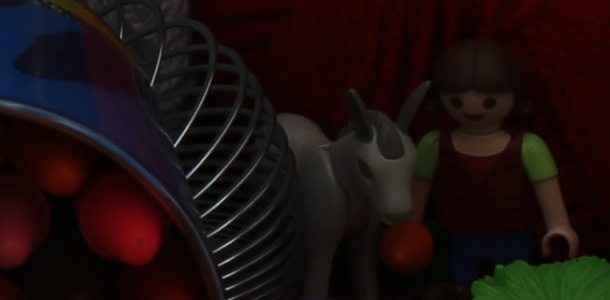
Click here to see the full resolution image
ISO 200

Click here to see the full resolution image
ISO 400

Click here to see the full resolution image
ISO 800
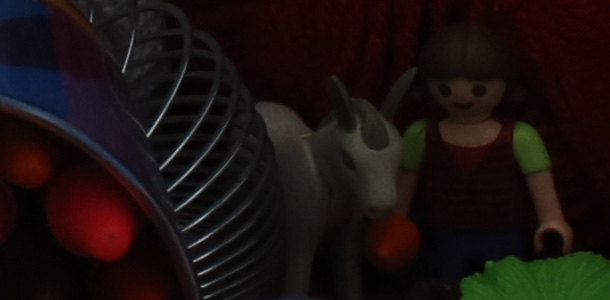
Click here to see the full resolution image
ISO 1600
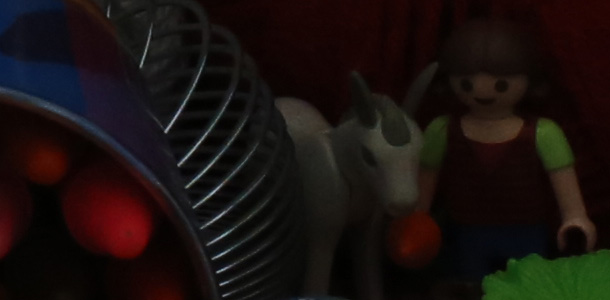
Click here to see the full resolution image
ISO 3200
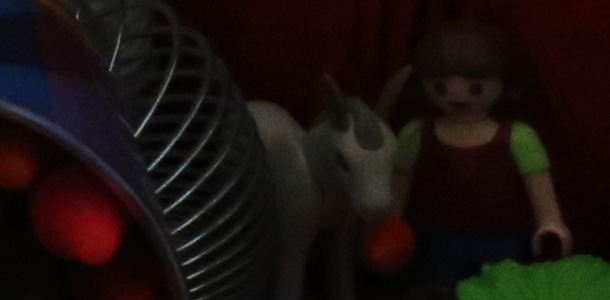
Click here to see the full resolution image
ISO 6400
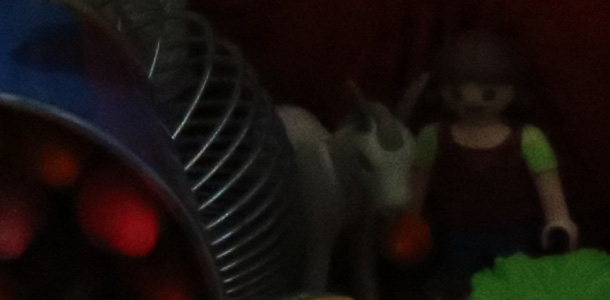
Click here to see the full resolution image
ISO 12800

Click here to see the full resolution image
ISO 25600
Raw
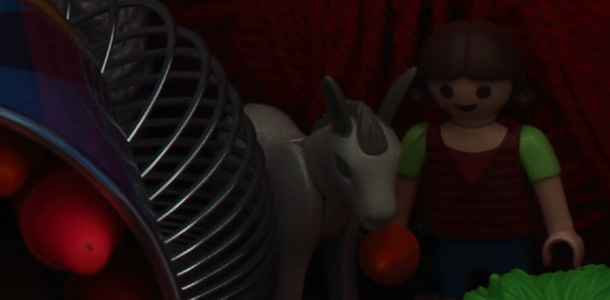
Click here to see the full resolution image
ISO 100
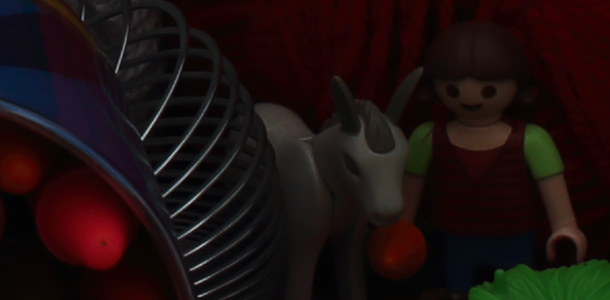
Click here to see the full resolution image
ISO 200
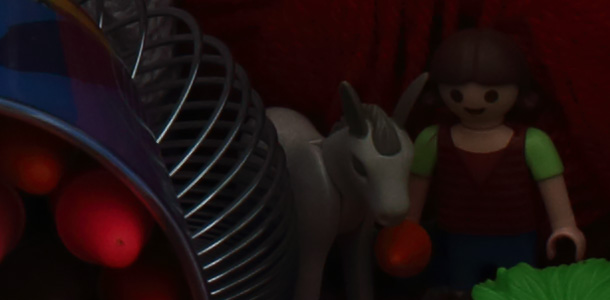
Click here to see the full resolution image
ISO 400
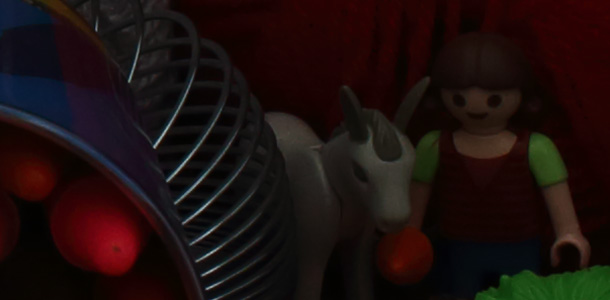
Click here to see the full resolution image
ISO 800
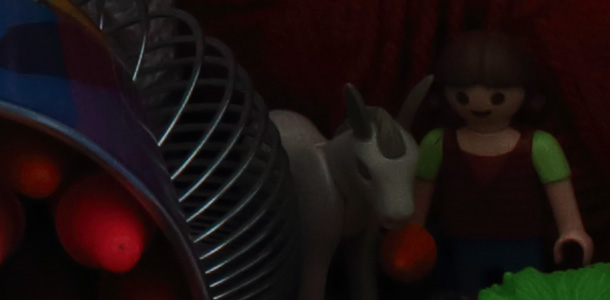
Click here to see the full resolution image
ISO 1600

Click here to see the full resolution image
ISO 3200

Click here to see the full resolution image
ISO 6400

Click here to see the full resolution image
ISO 12800

Click here to see the full resolution image
ISO 25600
There’s no doubt where the 20.2MP Canon EOS 6D is aimed. With some professional features stripped, you’re left with a camera finely tuned to the needs of the enthusiast.
The full frame sensor captures images that are rich in colour and tone, with JPEGs direct from camera needing only a slight tweak, if any, before they look their best.
Raw files contain plenty of detail and a wide dynamic range that enables you to pull back highlights and shadows with minimal introduction of noise, even when using higher sensitivity settings.
Although focus speeds can’t match those of the Canon EOS 7D, they are by no means sluggish, with the centre point AF locking on to a target and finding focus with good accuracy even in low light conditions, especially when a top notch L series lens is used.
Outside of the centre point, AF is by no means slow, and although grouped relatively tightly around the centre of the frame, there’s still a good amount of flexibility.
We liked
The Canon EOS 6D’s full frame sensor gives you lots of control over depth of field, and captures plenty of detail. Canon also has a good understanding of what people like about photographs, and as a result the Canon 6D produces images with pleasing colour and contrast.
Canon’s EOS Remote app is also excellent, affording a high level of control over the camera via its built-in Wi-Fi system.
We disliked
We would have loved Canon to have given the EOS 6D an articulated screen for more convenient shooting from a range of angles, but perhaps this would have pushed the price a bit too high for comfort and, of course, smartphone users have the option to use their phone as a remote viewfinder.
As we have said before, it would be nice to be able to customise the weighting that the iFCL metering system gives to the brightness of the subject under the active AF point, because in high-contrast lighting conditions this can have a significant impact on the image. In some instances it appears to work more like centre-weighted metering than evaluative.
Final verdict
All things considered, the Canon EOS 6D is an excellent choice for the enthusiast and club photographer looking for a full-frame DSLR. These users will find that they have just about everything they need, and a bit more besides.
It may take them a while to get to grips with the subtleties of the camera’s AF system, and they will have to remember some of the basics of metering when using the iFCL evaluative system in high contrast conditions, but they will appreciate the end results.